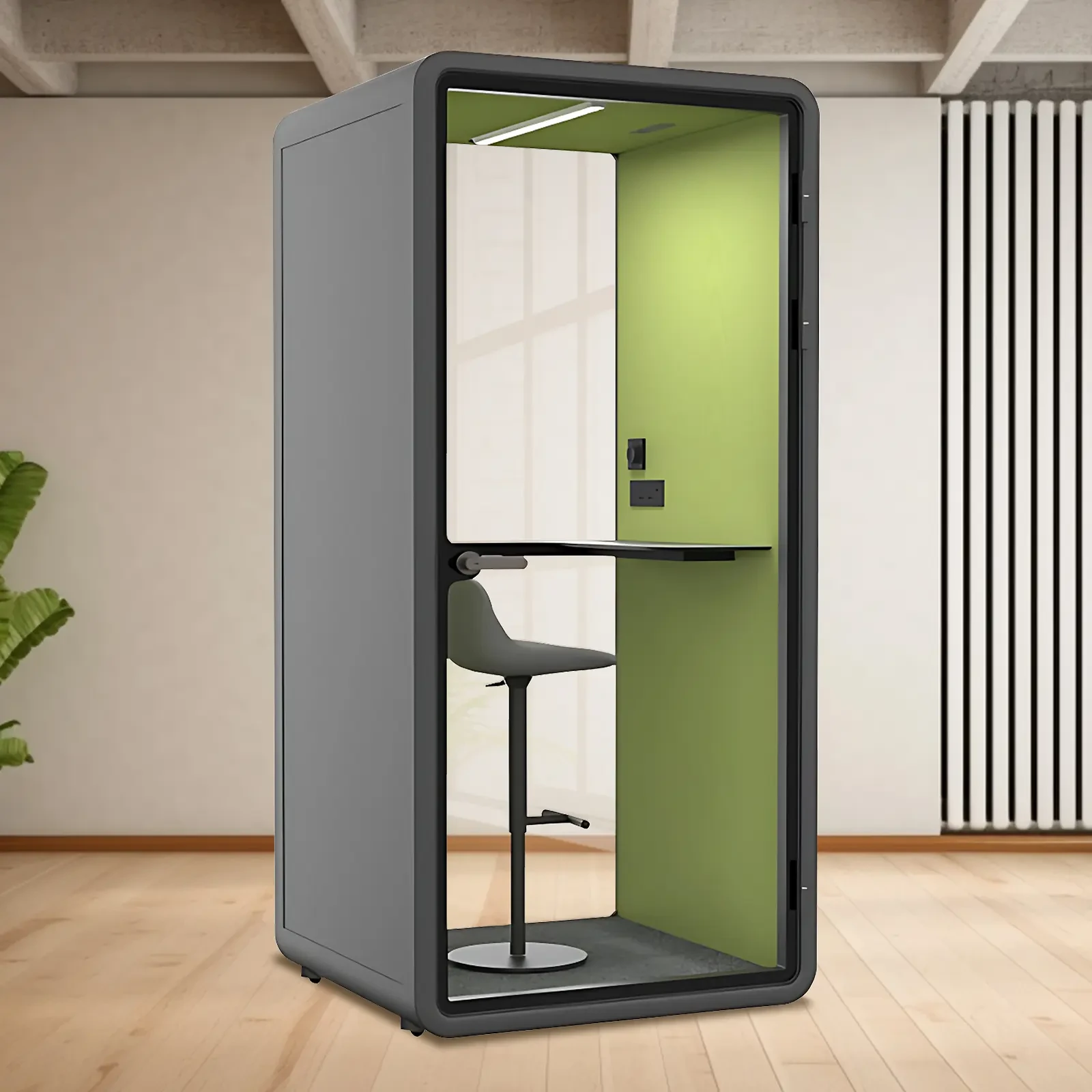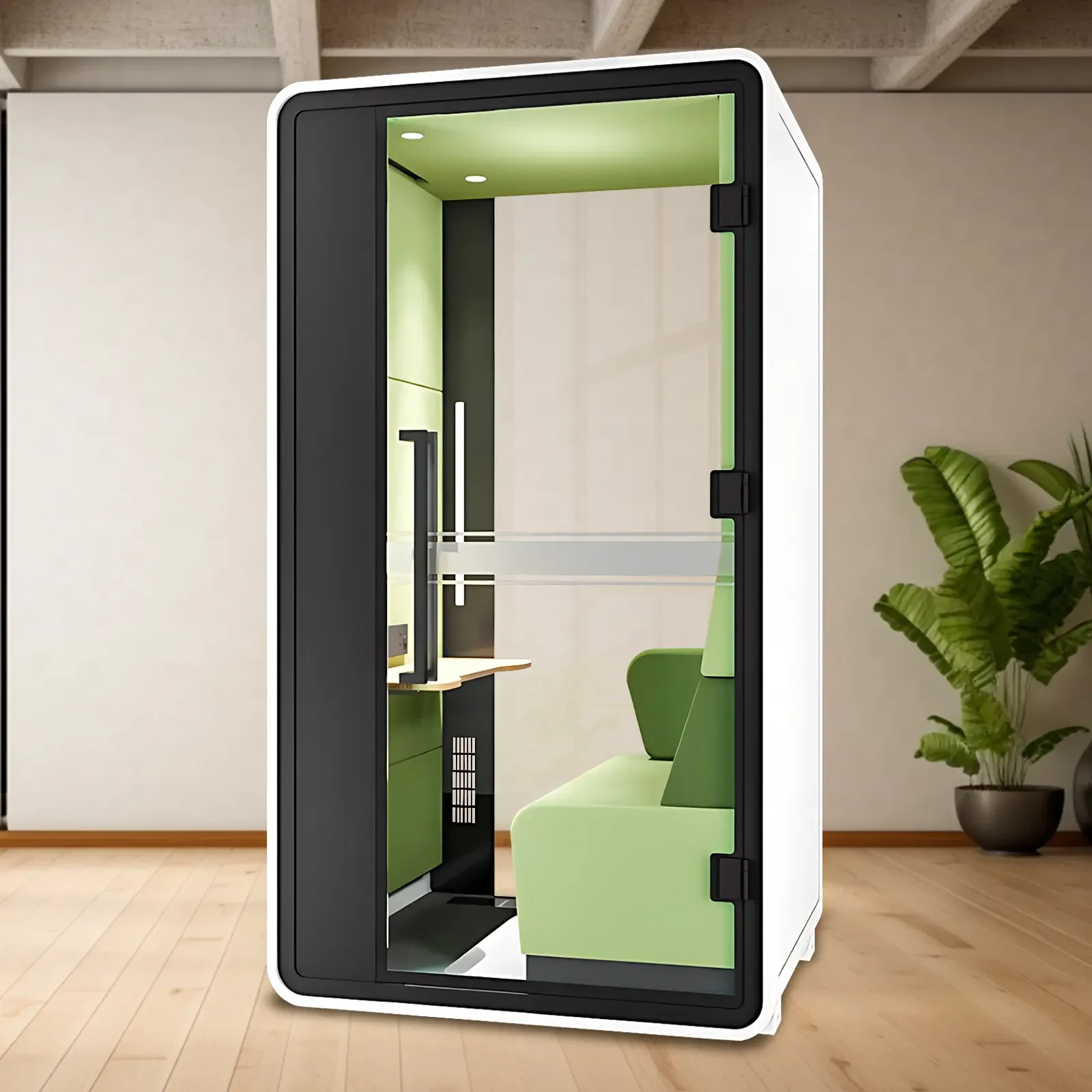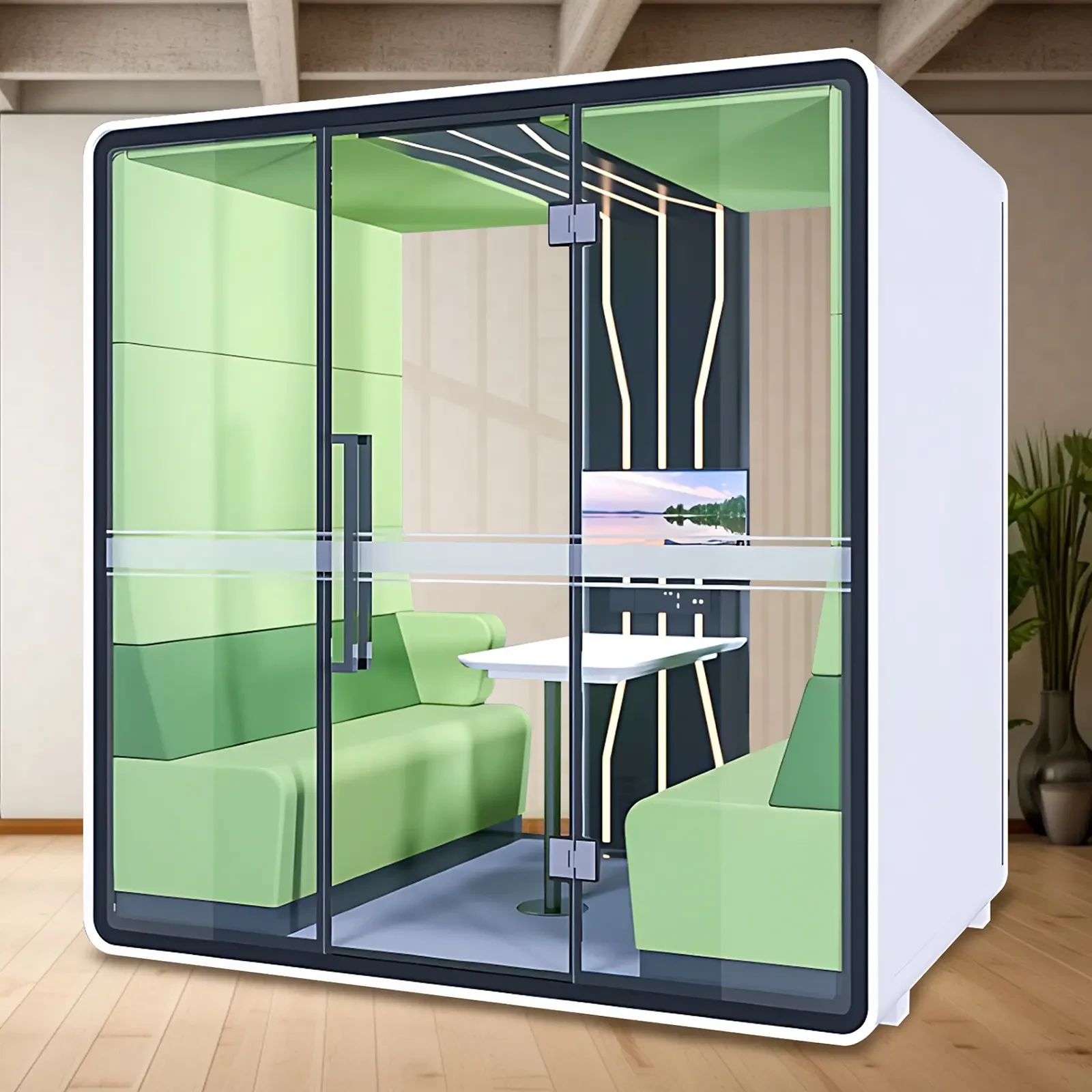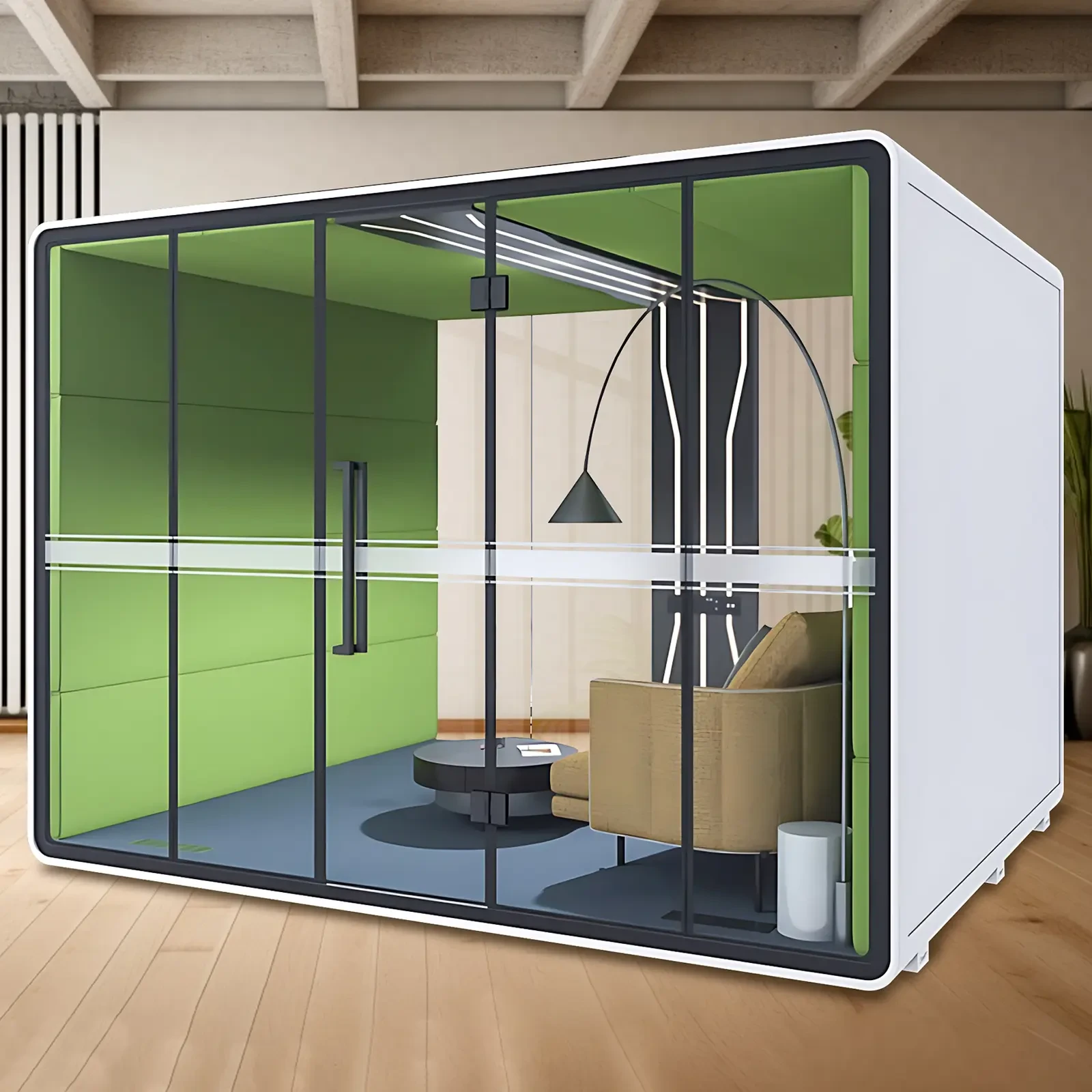Want to practice piano at home without disturbing others, keep office meetings private, or stream live without receiving unwanted noise? "Soundproof piano rooms" are becoming a new favorite among urban families and creative professionals! This article provides an in-depth analysis of what a soundproof room is, how it works, the key specifications, and how to choose the right portable silent room based on your budget and scenario. From acoustic materials to structural design, and through real-world user experiences, we'll thoroughly unpack the secrets of "small space, big quiet," helping you avoid pitfalls and rationally recommend truly practical soundproofing solutions.
What is a soundproof piano room? Does it really "block out sound"?
Don't be fooled by the name—a soundproof piano room isn't a traditional "house" but a portable, enclosed space designed for optimized acoustics. It's also called a "silent room," "study cabin," or "recording booth." Its core purpose is to prevent sounds from escaping (such as playing the piano, talking, or live streaming) while also preventing external noise from disturbing the interior.
Sounds like magic? It's actually the science of acoustics that's at work. Simply put, it's like putting a "soundproof bulletproof vest" on a room—through multiple materials and structural designs, it "blocks" or "absorbs" sound. Common soundproofing methods include mass damping (thick materials block sound waves), sound absorption (reducing echo), and sealing (preventing sound leakage). So, with the right design, you can truly "play the piano without disturbing your neighbors, and hold meetings without being eavesdropped on."
What determines soundproofing effectiveness? You must understand these parameters!
Choosing the right soundproof room depends on these key factors:
1. Sound Transmission Class (STC): This is the core indicator for measuring soundproofing performance, measured in "STC" (Sound Transmission Class). The higher the value, the better the soundproofing. Ordinary walls have an STC of approximately 30-40, while professionally soundproofed rooms can reach STC 50 and above. If you live in an older neighborhood and can hear neighbors arguing as soon as you open the windows, it's recommended to choose a model with an STC of 50 or higher to effectively block out the loud piano sounds.
2. Material and Thickness: Common structures include double-layer steel plate with rock wool filling, acrylic plate with sound-absorbing foam, and aluminum alloy frame with high-density sound insulation panels. Generally speaking, the thicker and higher the density of the panel, the better the sound insulation. For example, a 10mm thick composite sound insulation panel is much stronger than a 5mm one.
3. Sealing: Door gaps, window gaps, and vents are all prone to sound leakage. High-quality soundproof rooms will use magnetic sealing strips, airtight doors, and even silent ventilation systems to ensure a completely leak-proof sound barrier.
4. Internal Sound Absorption: Simply blocking the exterior isn't enough; you also need to prevent echoes! Applying sound-absorbing foam and diffusers to the interior can create a cleaner sound, making it particularly suitable for recording, live streaming, and online classes.
A Complete Analysis of Suitable Audiences and Usage Scenarios
Don't think it's only for pianists! More and more people with sound sensitivity are using this amazing device 👇:
✅ For families: Children can practice without disturbing neighbors, parents can enjoy their lunch break without interruptions, and you can even create a dedicated "parent-child music corner" 🎵. It's especially suitable for older residential communities, shared apartments, and multi-generational households.
✅ For office workers/students: No more awkward background noise during remote meetings, and you can stay focused on writing PowerPoint presentations or memorizing vocabulary. This small, silent cabinet is your "high-efficiency energy station" 💼.
✅ For creative content creators: A favorite for streamers, voiceover artists, and short video bloggers! It eliminates ambient noise interference, records clear and natural sound, and enhances the quality of your content 🎥.
⚠️ Note: Don't expect it to be completely "silent"—pianos are naturally loud, and even with the best sound insulation, even slight vibrations can be transmitted to the floor. It's recommended to use vibration-absorbing mats or carpeting to double the effect! Also, if you spend extended periods of time in enclosed spaces, ensure ventilation to avoid stuffiness.
Buying Guide: What's your budget? How to choose a portable soundproof room without getting into trouble?
The prices of portable soundproof rooms on the market range widely, from a few thousand yuan to tens of thousands of yuan, depending mainly on size, material, and features.
🔹 Entry-level (3,000–6,000 yuan): Suitable for students and short-term use. For example, a small 1.2m×1.2m study pod, made of lightweight composite panels and basic sound-absorbing cotton, with an STC of approximately 40, is suitable for studying, online classes, and light live streaming.
🔹 Mid-to-high-end (8,000–20,000 yuan): Mainstream recommendations! For example, a 1.5m×1.8m piano-specific silent room, made of double-layer steel panels and rock wool filling, with an STC of ≥50, featuring silent ventilation windows and adjustable lighting, is suitable for home practice, professional dubbing, and small live streaming studios.
🔹 High-end customized (over 20,000 yuan): Targeted at professional recording studios and corporate conference rooms, these rooms support modular splicing, intelligent temperature control, wireless microphone systems, and can even be integrated into smart homes.
💡 Recommendation: If you're a beginner or just practicing occasionally, there's no need to jump right in and buy an expensive model. However, for long-term practice or content creation, consider mid- to high-end models with an STC ≥ 50, sealed doors, and sound-absorbing lining. Be sure to ask if on-site installation is available and whether it can be disassembled and transported; after all, its portability is one of its greatest strengths!
Conclusion
A soundproof piano enclosure is more than just a "soundproof box"; it symbolizes the modern pursuit of quality of life and personal space. Its scientific design addresses "sound anxiety," freeing you from the constraints of your environment when practicing, working, and creating. Choose the right size, pay attention to the STC value, prioritize sealing and sound absorption, and factor in your budget and frequency of use to find the model that truly delivers peace of mind. Remember: silence isn't a luxury; it's a life detail worth investing in.

 USD
USD
 GBP
GBP
 EUR
EUR






